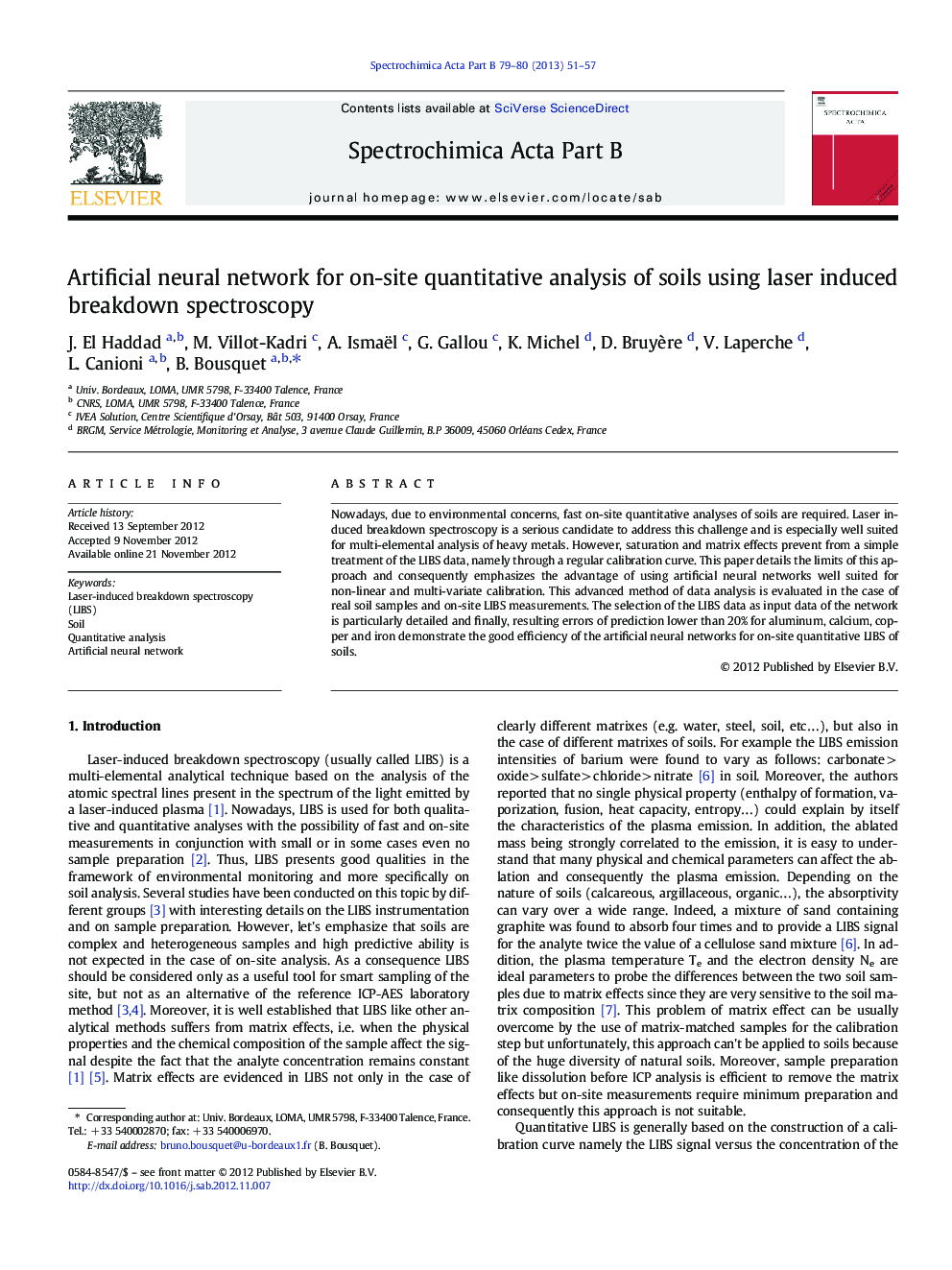| کد مقاله | کد نشریه | سال انتشار | مقاله انگلیسی | نسخه تمام متن |
|---|---|---|---|---|
| 1239955 | 1495720 | 2013 | 7 صفحه PDF | دانلود رایگان |

Nowadays, due to environmental concerns, fast on-site quantitative analyses of soils are required. Laser induced breakdown spectroscopy is a serious candidate to address this challenge and is especially well suited for multi-elemental analysis of heavy metals. However, saturation and matrix effects prevent from a simple treatment of the LIBS data, namely through a regular calibration curve. This paper details the limits of this approach and consequently emphasizes the advantage of using artificial neural networks well suited for non-linear and multi-variate calibration. This advanced method of data analysis is evaluated in the case of real soil samples and on-site LIBS measurements. The selection of the LIBS data as input data of the network is particularly detailed and finally, resulting errors of prediction lower than 20% for aluminum, calcium, copper and iron demonstrate the good efficiency of the artificial neural networks for on-site quantitative LIBS of soils.
► We perform on-site quantitative LIBS analysis of soil samples.
► We demonstrate that univariate analysis is not convenient.
► We exploit artificial neural networks for LIBS analysis.
► Spectral lines other than the ones from the analyte must be introduced.
Journal: Spectrochimica Acta Part B: Atomic Spectroscopy - Volumes 79–80, 1 January–1 February 2013, Pages 51–57